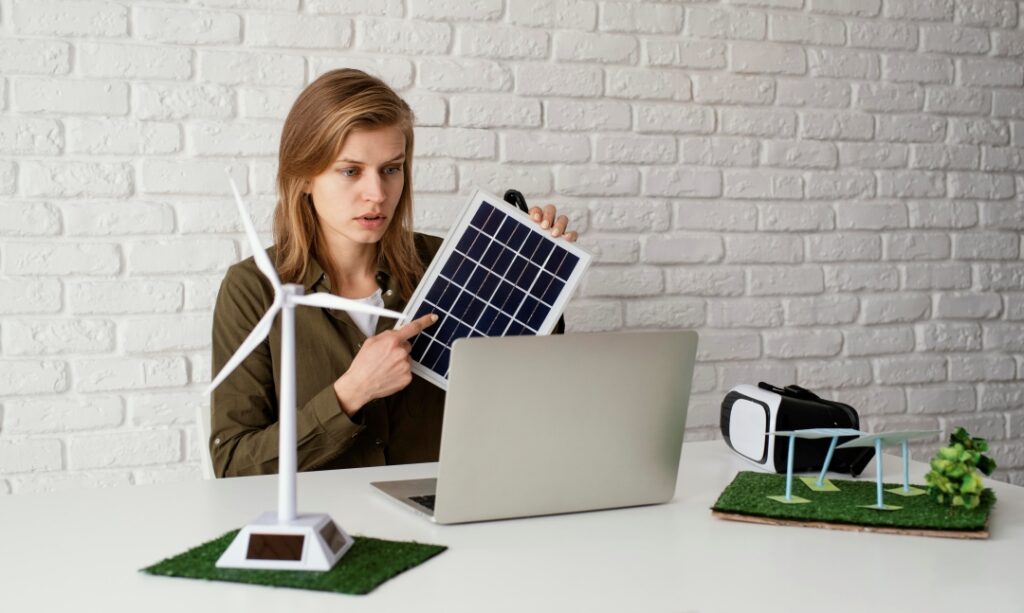In today’s fast-paced world, where sustainability and cost-efficiency are more than just buzzwords, commercial buildings stand at the forefront of a significant shift.
This article delves deep into the realm of energy efficiency measures for commercial buildings, offering a detailed exploration of strategies designed to not only curb energy consumption but also pave the way for a greener, more sustainable future.
So, let’s dive right in and shed some light on how commercial property owners and users can transform energy use, one innovative step at a time.
Understanding Energy Efficiency in Commercial Buildings
At its core, energy efficiency in the commercial sector is all about maximizing the output while minimizing the energy input. It is not merely about using less energy; it is about using it smartly and sustainably.
Energy management for commercial buildings has become a critical operational strategy, aiming to reduce carbon footprints, lower utility bills, and enhance the overall value of the property.
Why Enhancing Energy Efficiency is Important for Property Owners?
Understanding the importance of energy efficiency measures for commercial buildings is crucial for property owners or managers looking to make impactful changes. Here are a few reasons why as a property owner or manager you should focus on enhancing energy efficiency:
- Economic Savings: Emphasizing energy efficiency can lead to substantial savings. Commercial energy-saving tips highlight that efficient practices reduce operational costs, directly benefiting the bottom line.
- Environmental Stewardship: Energy management for commercial buildings plays a pivotal role in minimizing environmental impact. By reducing energy consumption, buildings contribute less to carbon emissions, aligning with global efforts to combat climate change.
- Improved Occupant Health: Investing in energy efficiency measures can lead to healthier indoor environments. This is a significant aspect of how to reduce energy consumption in commercial buildings, as it not only saves energy but also enhances occupant well-being.
- Regulatory and Market Advantage: Common energy efficiency measures for commercial buildings are increasingly becoming a regulatory requirement. Buildings that meet or exceed these standards are more attractive to tenants and investors, enhancing their market value.
- Future-proofing the Property: The landscape of commercial power-saver technologies and regulations is evolving. Staying ahead by adopting energy efficiency measures ensures that properties remain competitive and avoid costly future upgrades.
Key Strategies for Enhancing Energy Efficiency
Delving deeper into energy efficiency measures for commercial buildings, here are some targeted strategies you can implement to enhance energy efficiency in your property:
- Optimizing Natural Lighting and Ventilation: Maximizing the use of natural light and promoting natural ventilation can significantly reduce the need for artificial lighting and HVAC use, marking this a simple yet effective commercial energy-saving idea.
- Smart Thermostat Management: The strategic use of programmable and smart thermostats, as part of energy management for commercial buildings, can lower energy costs by adjusting temperatures based on occupancy and time. This showcases a straightforward commercial power-saver tactic that saves money and time.
- Focusing on HVAC Efficiency: HVAC systems are among the largest energy consumers in commercial buildings. Enhancing their efficiency through regular maintenance, upgrades to more efficient models, and the use of programmable thermostats can lead to significant energy savings. Moreover, incorporating energy-recovery ventilation systems can further optimize energy use by recovering heat or cool air from exhaust systems.
- Conducting Energy Audits: Conducting regular energy audits is essential to understand a building’s energy consumption patterns and identify areas for improvement. These audits can uncover inefficiencies in systems and processes, leading to targeted interventions that enhance the building’s overall energy performance.
- Investing in Energy-efficient Technologies: Upgrading to LED lighting and high-efficiency HVAC systems represents a direct application of common energy efficiency measures for commercial buildings, drastically cutting down energy use.
- Water Efficiency: Adopting water-saving fixtures and repairing leaks contribute to energy conservation, aligning with effective commercial energy-saving tips by reducing the energy required for water heating.
- Promoting Energy Conservation Practices: Encouraging energy conservation practices among building occupants is also vital. This can be achieved through awareness campaigns, incentives for energy-saving behaviors, and implementing policies that support energy efficiency. Simple actions, such as turning off lights when not in use or optimizing settings on personal and office equipment, can cumulatively lead to considerable energy savings.
Incorporating these strategies into the management and operation of commercial buildings not only advances energy efficiency but also fosters economic savings, environmental sustainability, and enhanced occupant comfort.
By prioritizing these measures, property owners can achieve significant benefits, marking a step forward in the sustainable management of commercial spaces.
Financial Incentives and Programs for Energy Efficiency in Commercial Buildings
Financial incentives play a pivotal role in promoting energy efficiency in commercial buildings. Various federal, state, and local programs offer financial assistance, tax deductions, and grants to encourage the adoption of energy-efficient practices and technologies.
These include:
Tax Incentives
The U.S. Department of Energy outlines specific tax deductions available for energy-efficient upgrades. One notable program is the 179D commercial buildings energy efficiency tax deduction, which has been updated as part of the Inflation Reduction Act.
This program allows building owners to claim a tax deduction for installing qualifying energy-efficient systems, with the possibility of claiming up to $1.88 per square foot for new or existing buildings that meet certain energy and power cost reductions compared to a building that meets the minimum requirements set by ASHRAE Standard 90.1.
Financing Options
Financing need not be a barrier to implementing energy efficiency upgrades. The Department of Energy highlights the availability of federal, state, and local tax incentives for energy efficiency improvements, alongside other financial opportunities.
These incentives are designed to help commercial building owners meet their energy goals by offsetting some of the costs associated with energy-efficient renovations.
Grants and Funding Opportunities
Federal grants are another form of financial support available to facilities looking to enhance their energy efficiency. These grants can cover a wide range of activities, from the development of new buildings to the renovation or expansion of existing ones.
To be eligible for these grants, businesses must meet certain requirements, which vary depending on the specific grant program. By leveraging these financial incentives and programs, commercial building owners can significantly reduce the upfront costs associated with energy-efficient upgrades.
This not only helps in achieving energy savings and environmental benefits but also enhances the building’s value and competitiveness in the real estate market.
Conclusion: Embracing a Sustainable Future
As we look towards the future, the importance of implementing energy efficiency measures for commercial buildings cannot be overstated. It is a journey towards sustainability that benefits not just the individual businesses but the planet as a whole.
By adopting commercial energy-saving ideas and tips, businesses can enjoy reduced operational costs, enhanced property value, and a significant step forward in their environmental stewardship.
Remember, every small step toward energy efficiency is a leap toward a more sustainable and prosperous future. So, why wait? Start exploring how to reduce energy consumption in commercial buildings today and make a difference that counts for tomorrow.

